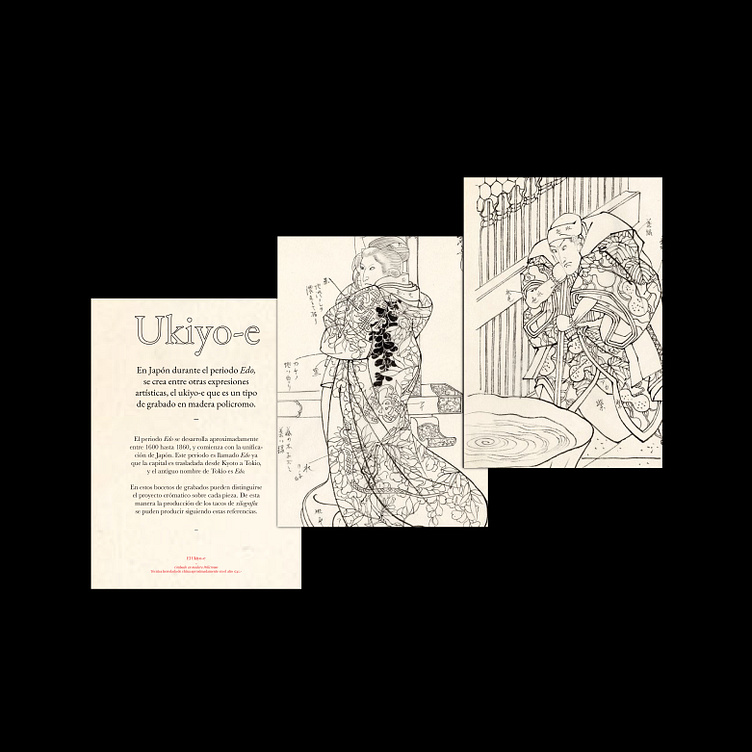Ukiyo-e
Ukiyo-e _
In Japan during the Edo period, among other artistic expressions, the ukiyo-e, which is a type of polychrome woodcut, is created. The Edo period runs from about 1600 to 1860, and begins with the unification of Japan. This period is called Edo since the capital is moved from Kyoto to Tokyo, and the old name of Tokyo is Edo.
In these sketches of engravings the chromatic project on each piece can be distinguished. In this way the production of the woodblock blocks can be produced following these references.
In the Edo period, the social class that was made up of merchants, artisans and farmers, began to gain ground in the country, creating a solid commercial economy in the cities and towns. They are anonymous artisans who satisfy the tastes of the masses, producing engravings, illustrating books, and manufacturing everyday objects such as textiles, ceramics and domestic furniture.
Ukiyo-e covers various topics such as scenes from everyday life in Edo, tributes to eroticism and worldly pleasures, views of various famous places and temples, and propaganda and dissemination of the Kabuki theater, through portraits of fashionable actors.
We honor this beautiful technique with a sensitive editorial project showing a little of its pieces.
With love, Barthes.
